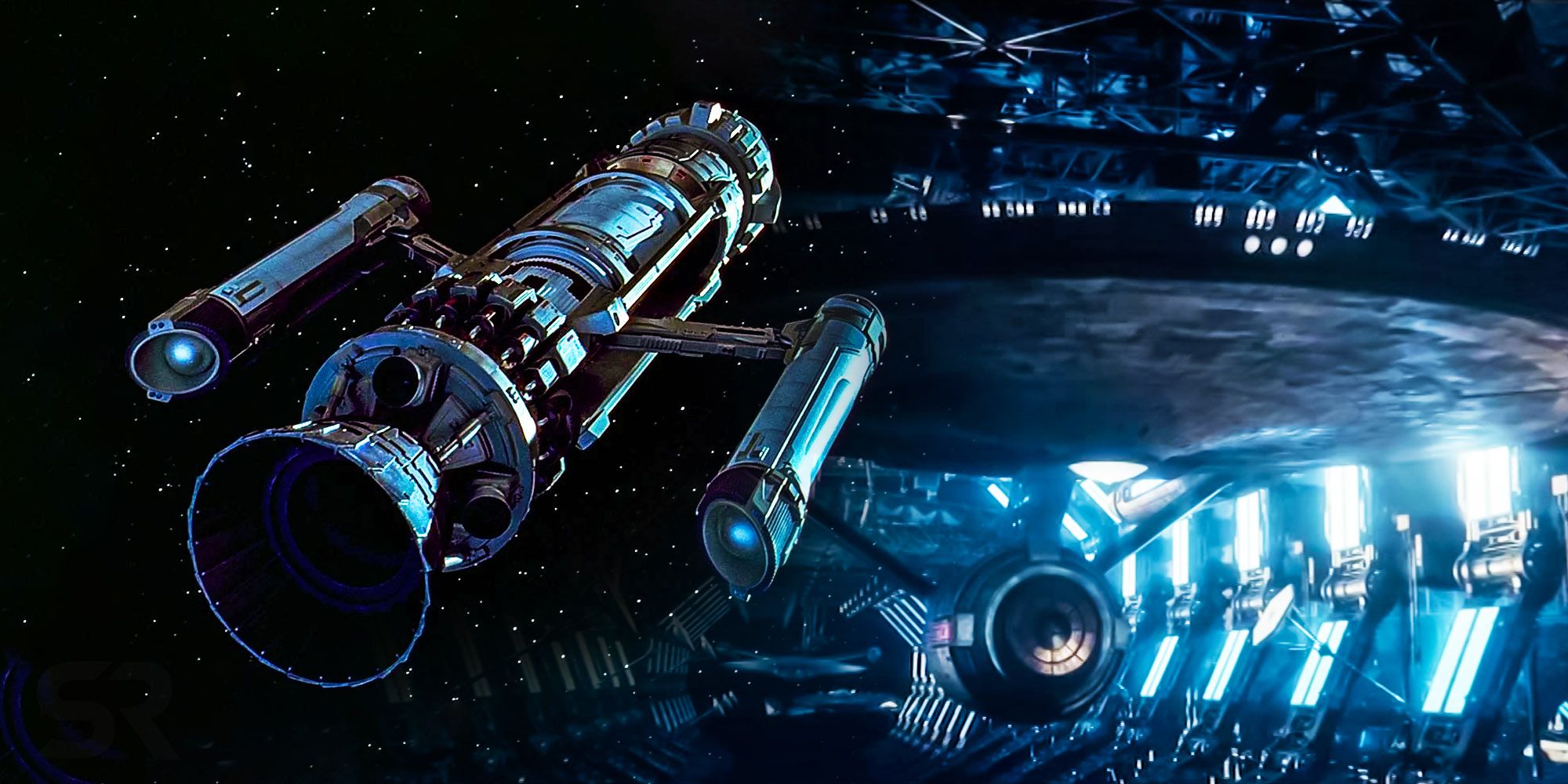Warning: SPOILERS for Star Trek: Lower Decks Season 5, Episode 2 - "Shades of Green"

The Orions in Star Trek: Lower Decks bring back Star Trek's most historic starships. Former Starfleet Lieutenant D'Vana Tendi (Noël Wells) returned to Orion at the end of Star Trek: Lower Decks season 4 and resumed her role as Mistress of the Winter Constellations. A conflict with the blue Orions of House Azure instigated a war with House Tendi, and this was settled with the return of ancient Orion sailing ships similar to those seen in Star Trek before.
Warp drive is Star Trek's dominant form of travel, even going hundreds of years into the future of Star Trek: Discovery's 32nd century. Every known spacefaring race, from the United Federation of Planets to the Romulans, Klingons, Cardassians, Orions, and even the Borg uses a variation of warp drive. However, many alien species began traveling to the stars hundreds or even thousands of years ago, well before the invention of warp drive. At least three known ancient Star Trek races journeyed through space using solar sail ships.
Star Trek: Lower Decks Reveals Orions Use Sail Ships
House Tendi and House Azure race the Excellon Nebula
Star Trek: Lower Decks season 5, episode 2, "Shades of Green," revealed that Orions used ancient sailing ships hundreds of years before warp travel became the backbone of the Orion Syndicate. To settle the score between House Tendi and House Azure, the Orion Pirate Queen ordered a sailing ship race through the dangerous Excellon Nebula. The winning House would absorb the wealth of the losing house, which would be plunged into poverty.
Although D'Erika Tendi (Ariel Winter) is a trained sailor who took sailing classes at school, D'Vana Tendi and her crew gently mutined (a "cute-iny") for fear that the pregnant D'Erika could lose her baby. Meanwhile, House Tendi faced the glaring issue of solar sailing ships: the vessel can be crippled if the sails are damaged. Ingeniously, D'Vana used her Starfleet engineering prowess to hook onto a neighboring comet to catch House Azure's ship. Unfortunately, D'Vana's solution of forcing a tie so that both Houses would 'win' enraged the Pirate Queen, who stripped House Azure and Tendi of their wealth, although the Tendi sisters found a way to replace their family's fortune. Still, it was a triumphant comeback for Star Trek's solar sailing ship.
Sail Ships Were Used By DS9’s Bajorans & Strange New Worlds’ R’ongovians
DS9 introduced solar sail ships to Star Trek
Star Trek: Deep Space Nine season 3, episode 22, "Explorers," introduced solar sailing ships in the form of a Bajoran lightship built by Commander Benjamin Sisko (Avery Brooks). Using the same materials from ancient texts, Sisko constructed his lightship in three weeks, intending to prove ancient Bajorans sailed from Bajor to Cardassia using tachyon eddys from the Denorios Belt. Jake Sisko (Cirroc Lofton) joined his father on their successful journey, proving the ancient Bajoran texts right.
Sisko's lightship in 2371 was the first sailing ship seen in Star Trek's 24th century, with Star Trek: Lower Decks ' Orion sailing ships following a decade later, in 2381.
Star Trek: Strange New Worlds season 1, episode 5, "Spock Amok," introduced a new species, the R'ongovian Protectorate, who negotiated membership into the United Federation of Planets. After tense talks that went nowhere, Captain Christopher Pike (Anson Mount) realized the R'ongovians required empathy and recognized their concerns about joining the Federation. Satisfied by Pike's overtures, the R'ongovians left Starbase One aboard a solar sailing ship, the first seen in the 23rd century and the first seen in Star Trek since Deep Space Nine.
Why Didn't Earth Use Sail Ships In Star Trek?
Humans went to space a different way

Star Trek's history is mostly identical to real world history until major divergences happen in the form of the Eugenics Wars and World War III. In terms of space exploration, NASA existed, as did the Apollo missions to the moon and subsequent events involving space travel. However, humans never attempted to use solar sail ships like the ancient Bajorans, Orions, or the R'ongovians to journey to other worlds. Escaping Earth's gravity required the invention of rockets and human-built spaceships relied on different means of faster propulsion than solar sails.
Star Trek: Picard season 2 revealed a mission to Europa led by Dr. Renee Picard (Penelope Mitchell) brought back a bio-organism that helped Earth solve its climate crisis.
Once Dr. Zephram Cochrane (James Cromwell) successfully achieved humanity's first warp flight in 2063, the Vulcans immediately arrived and made First Contact with Earth. This led to the Vulcans becoming United Earth's guiding hand as Starfleet was created, humans began traveling the stars, and the invention of the first warp five-capable starship, the NX-01 Enterprise, allowed Captain Jonathan Archer (Scott Bakula) to lead Mankind's first deep space voyages in Star Trek: Enterprise. Humans skipped over inventing their own solar sailing ships, which are the province of the Bajorans, R'ongovians, and the Orions in Star Trek: Lower Decks.



